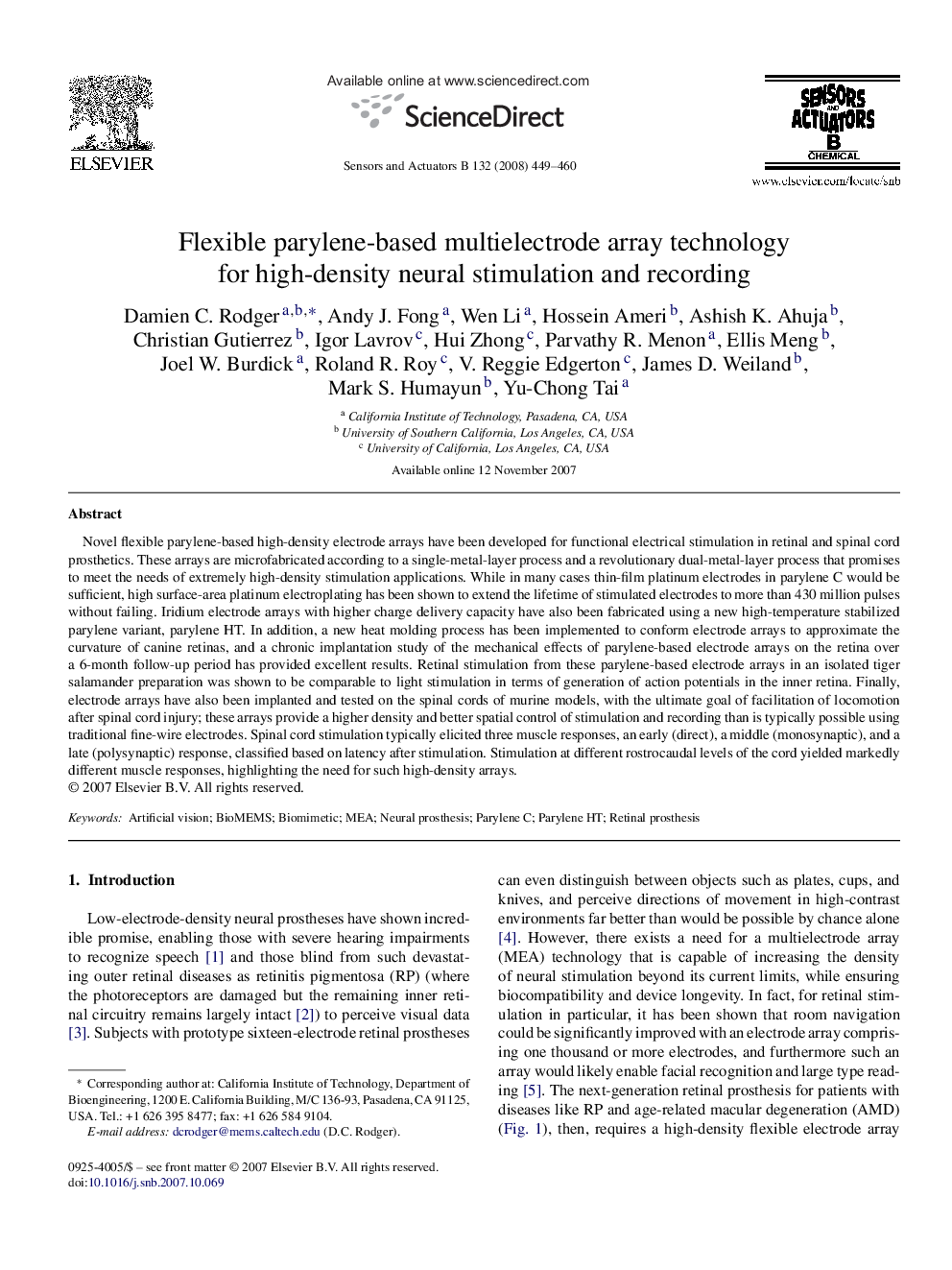| کد مقاله | کد نشریه | سال انتشار | مقاله انگلیسی | نسخه تمام متن |
|---|---|---|---|---|
| 745809 | 894433 | 2008 | 12 صفحه PDF | دانلود رایگان |

Novel flexible parylene-based high-density electrode arrays have been developed for functional electrical stimulation in retinal and spinal cord prosthetics. These arrays are microfabricated according to a single-metal-layer process and a revolutionary dual-metal-layer process that promises to meet the needs of extremely high-density stimulation applications. While in many cases thin-film platinum electrodes in parylene C would be sufficient, high surface-area platinum electroplating has been shown to extend the lifetime of stimulated electrodes to more than 430 million pulses without failing. Iridium electrode arrays with higher charge delivery capacity have also been fabricated using a new high-temperature stabilized parylene variant, parylene HT. In addition, a new heat molding process has been implemented to conform electrode arrays to approximate the curvature of canine retinas, and a chronic implantation study of the mechanical effects of parylene-based electrode arrays on the retina over a 6-month follow-up period has provided excellent results. Retinal stimulation from these parylene-based electrode arrays in an isolated tiger salamander preparation was shown to be comparable to light stimulation in terms of generation of action potentials in the inner retina. Finally, electrode arrays have also been implanted and tested on the spinal cords of murine models, with the ultimate goal of facilitation of locomotion after spinal cord injury; these arrays provide a higher density and better spatial control of stimulation and recording than is typically possible using traditional fine-wire electrodes. Spinal cord stimulation typically elicited three muscle responses, an early (direct), a middle (monosynaptic), and a late (polysynaptic) response, classified based on latency after stimulation. Stimulation at different rostrocaudal levels of the cord yielded markedly different muscle responses, highlighting the need for such high-density arrays.
Journal: Sensors and Actuators B: Chemical - Volume 132, Issue 2, 16 June 2008, Pages 449–460